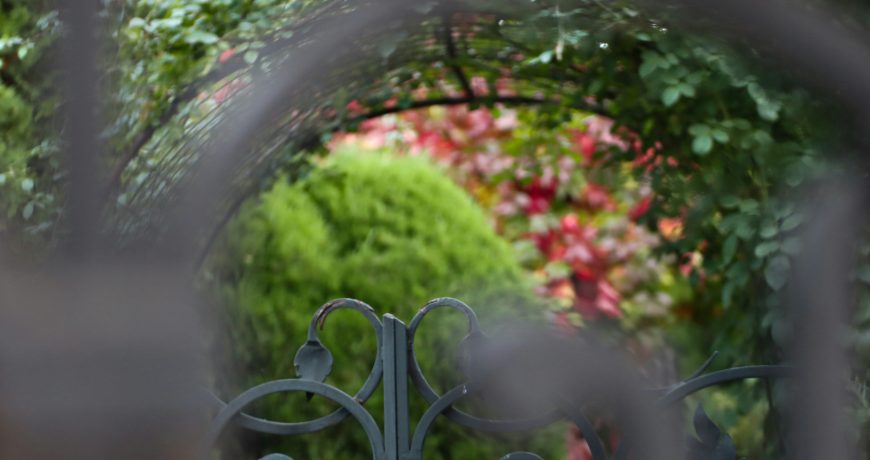How to Clean Wrought Iron Fence
A wrought iron fence is a subtle yet stunning addition to any property. It doesn’t just give an aesthetic life to your premises, though – its primary purpose is to protect and deter. Or, perhaps you installed your fence to try and keep pets in.
Whatever the case, cleaning wrought iron fence is not something you can overlook. Just a little TLC will go a long way in keeping your fence looking its best and serving its purpose for the long haul, in turn helping you maximize the investment you made.
It’s really not much work, either. We’ll walk you through how to clean wrought iron fence below, from simple scrubbing to remove dust and vegetation to the best way to clean wrought iron fence rust spots. You’ll gain a few other wrought iron fence maintenance tips, too.
If you discover your fence is beyond restoration, though, it might be time to look into replacement. Here at Viking Fence we’re the #1 choice for wrought iron fence Dallas, wrought iron fence Austin, and across all of Texas. Get in touch for more information!
Why is Cleaning Wrought Iron Fence Necessary?
Just as with vinyl fence cleaning or cedar fence cleaning, you need to schedule a bit of time every so often to clean your wrought iron fence.
Sure, it sounds daunting if your fence line is expansive. But trust us, it’s worth the effort, and like we said, it’s not nearly as complicated or time-consuming as you might assume.
Dirt, grime, and even rust can build up on the fence material over time and not only detract from the curb appeal of your fencing, but also speed up the process of material degradation.
Wrought iron is known for its strength and durability, and maybe that’s why you chose it over other materials like aluminum fencing or steel fencing. It’s still susceptible to rust, though, especially when exposed to the harsh weather we face here in the Lone Star State.
The sooner you remove that rust, the less likely it is to eat away at the material and spread. In this sense, cleaning wrought iron fence will save you more costly and extensive repairs down the road.
A well-maintained fence is a stronger fence, and that’s what matters most. You can continue to enjoy peace of mind with a bit of wrought iron fence maintenance. So, let’s get into how to clean a wrought iron fence below!
How to Clean Wrought Iron Fence: The Best Way to Clean Wrought Iron Fence
The good news is that wrought iron cleaning is actually a lot simpler than cedar fence cleaning since you don’t have to worry about splintering the wood. You can be a bit more aggressive.
But, you still need to make sure you’re following the best way to clean wrought iron fence to avoid causing more harm than good. Let’s start by going over the materials and supplies you need.
Gathering the Right Supplies
You don’t need anything fancy to get this task done, just a few basic items you probably already have lying around the house somewhere:
- Mild soap or dish detergent: Something gentle that won’t damage the iron.
- Bucket of warm water: To mix the soap and rinse your tools.
- Soft cloth or sponge: For wiping down the surface without scratching it.
- Soft-bristled brush: Useful for scrubbing off dirt, especially in crevices or decorative parts of the fence.
- Garden hose: To rinse off the soap and debris.
- Steel wool or sandpaper: For tackling rust spots.
- Rust converter or rust remover: Optional, but helpful for more serious rust issues.
- Protective coating or wax: To seal and protect the fence after cleaning.
Step-by-Step Cleaning Process
The actual cleaning process is fairly straightforward. Here’s our advice on the best way to clean wrought iron fence:
- Rinse the Fence: Start by spraying the entire fence with water using your garden hose or a low-PSI pressure washer to remove any loose dirt or debris sitting on the surface.
- Wash With Soap: Fill your bucket with warm, soapy water. Gently scrub the fence using a soft sponge or cloth. Focus on areas where dirt or grime is more built-up. Don’t forget the nooks and crannies as these spots often collect the most dirt. If you have a brush, use it for detailed areas or stubborn grime.
- Rinse Thoroughly: Bring out the garden hose or power washer once more to remove any soap residue. Make sure to get all the soap off, as leaving it on can attract more dirt or cause discoloration over time.
- Dry the Fence: If you have a relatively small fence line to cover, you can use a clean cloth to wipe the fence dry, as this will prevent water spots from forming. Otherwise, letting it air dry is fine. All that matters is the fence dries before nightfall, as leaving moisture on wrought iron can lead to rust, especially in humid climates like we’re familiar with here in Texas.
Removing Rust Spots
If you’re struggling specifically with rust spots, you’ll need to take a more meticulous approach to removing them. Gently scrubbing them with steel wool or sandpaper is a good starting point.
You can also apply a rust converter or remover for those stubborn spots that are resilient to steel wool or sandpaper. This will neutralize rust and stop it from spreading.
You want to remove as much rust as possible without damaging the surrounding paint or finish. Just be aware, though, that you may end up having to repaint certain spots if the finish on the iron comes away.
Either way, we recommend adding a protective sealant once you’re finished to prevent new rust from forming. We’ll talk about that more specifically in our wrought iron fence maintenance tips below. But how often is cleaning wrought iron fence necessary?
How Often Should You Clean Your Fence?
Ultimately the eye test is the best way to determine when your fence is in need of a cleaning. A good rule of thumb, though, is 2-3 times a year. Once in the spring and again before winter will keep your fence looking stunning year-round.
Spring cleaning removes the grime and debris accumulated during the winter months, while the fall cleaning prepares your fence for the colder, wetter months ahead, when rust is more likely to develop. You can do a summer touch-up if needed.
That being said, it also depends on the climate in your area. Regions with high humidity or those along the coastline where saltwater is a concern are more susceptible to rust formation. In these settings, once a quarter might be a better cleaning frequency.
When in doubt, err on the side of caution and clean more often than necessary. After all, this is your property – you should take pride in keeping it looking its best!
More Wrought Iron Fence Maintenance Tips
Before we wrap up this guide on how to clean wrought iron fence we want to leave you with a few more wrought iron fence maintenance tips to help you make the most of this investment.
Applying a Protective Coating
We mentioned earlier that you should apply a protective coating to prevent rust and corrosion after cleaning. A quality sealant or clear wax will form a barrier between the iron and those harsh elements that can take a toll on your fence, most notably moisture.
Painting or Refinishing
Despite its long-lasting appeal, the paint on your wrought iron fence can chip or fade from weather exposure. Repainting or refinishing your fence not only improves its appearance but also adds a layer of protection.
Use a rust-resistant paint specifically designed for metal to give your fence a refreshed look and durable defense against rust. Take your time to weigh your options and make sure you choose the optimal paint.
Lubricating Hinges and Moving Parts
If your wrought iron fence has gates or moving parts, this is one of the most important aspects of wrought iron fence maintenance.
A silicone-based lubricant or similar product can prevent squeaking and wear, in turn keeping your fence operating smoothly for years to come. Apply it a few times a year to reduce friction and prevent parts from seizing up.
Inspecting and Repairing Damage Early
The more often you walk your fence line and watch out for signs of damage, the better. This will help you catch small issues before they snowball into more extensive (expensive) problems.
Fixing minor issues, like tightening loose screws or treating small rust spots, can save you from costly repairs down the road. But if you notice more concerning damage, you might need to get in touch with an expert for fence repair.
Viking Fence has been the trusted choice in Texas since 1972. We’re the #1 provider of wrought iron fence materials in the state, and we can even handle repairs or installation on your behalf to get your fence looking its best once again.
Our materials are specifically designed to resist rust and corrosion with an electro-coating process that ensures every nook and cranny is protected from the elements.
Plus, our team has more than 300+ years of experience installing fences. You can rest assured the job is getting done right. We serve the entire state, so get in touch if you’re in one of the areas below:
- Austin fence company
- Dallas fence company
- Fort Worth fence company
- San Antonio fence company
- Georgetown fence company
- Round Rock fence company
- Cedar Park fence company
- Pflugerville fence company
When you think Texas fencing, think Viking Fence!
Final Thoughts on How to Clean Wrought Iron Fence
That does it for our guide on the best way to clean wrought iron fence. This is an essential task a few times a year to preserve your investment and avoid the consequences of letting rust spread.
Learning how to clean wrought iron fence doesn’t take a lot of heavy lifting, and it will make a massive difference in how your fencing looks and performs over the years.
Be sure to implement other wrought iron fence maintenance measures as well, whether its applying a protective coating, lubricating hinges, or addressing rust spots early.
Our blog has more tips on how to install wrought iron fence, cedar fence lifespan, the standard gate size, the best nails for fence pickets, electric driveway gate cost, pressure treated pine vs cedar fencing, how to paint a cedar fence, and more.
When the time inevitably comes to replace your fence, remember that Viking Fence is the premier choice here in Texas – whether you just want fresh materials or you want someone to handle the project from A to Z. Reach out today to learn more!

